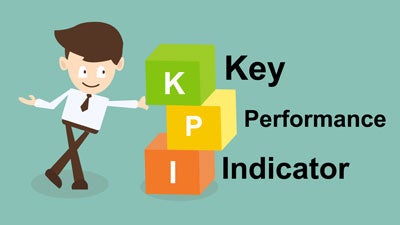
The concept of Key Performance Indicators (KPIs) has been around for a long time. Investopedia defines KPIs as a set of quantifiable measures that a company or industry uses to gauge or compare performance in terms of meeting their strategic and operational goals.
KPIs are tools that organizations use to define, measure, monitor and track its performance over time toward the attainment of its stated organizational goals. Even so, the first hurdle for many managers is gaining the proper understanding of exactly what KPIs are, and what they can do to help them run their operations more efficiently.
Related Article: Focus on Key Performance Indicators
Your KPIs tell you how well each division is functioning. For instance, if you run a staffing company that provides workers, one of your KPIs might be the number of open positions you haven’t filled. If you have two open positions out of 200, you know you’re doing well. If you have 20 open positions out of 40, you know you’re doing poorly.
Identifying Your Own KPIs
Managers should identify the factors they can intuitively view, and that will present a valid picture of what makes their organization successful. These factors (indicators) should fit into the overall objectives of the organization. Once this is accomplished, the manager should determine if these indicators are quantifiable and therefore, measurable.
KPIs Must be Quantitative, Quantifiable, and Measurable.
The standard rule of thumb is “if you can’t measure it, you can’t manage it.” What this means is that it may be extremely difficult to measure your success if your targets are not quantitative in nature. For example, if your goal is to improve customer satisfaction from “good” to “very good,” it may be difficult to objectively distinguish one level from the other.
However, if your goal is to improve an existing customer satisfaction rating of 85 percent to 88 percent, you will know in absolute terms whether or not you have met your goal if at the end of the period you have improved to either 87 percent (i.e., a point below) or 89 percent (i.e., a point above). In the first case, you have not met your goal, but in the second case, you have. Only by quantifying the KPI used to measure performance in this case, are you able to determine whether you have succeeded or not.
Need to Know vs. Nice to Know
In the world of KPIs, there is a big difference between “need to know” and “nice to know.” In the former, the resources required to collect, analyze, interpret, and distribute the KPI information will almost certainly be worth the effort.
“Need to know” data and information is what management will ultimately use to make its decisions for moving forward. However, “nice to know” data and information is really not worth the expense, and will typically use up many of the scarce resources that might otherwise have been used to generate the more important “need to know” data and information. Often, managers don’t know the difference, and track the wrong things.
In order for a KPI to have maximum value, it must be clearly defined, quantifiable, and relatively easy to measure. Metrics that are vague in definition; qualitative or subjective in nature; and next to impossible to collect, interpret, and analyze will not serve as a good basis for a KPI.
This article was originally published by Executive Coach DC
Published: June 22, 2015
3238 Views
3238 Views











